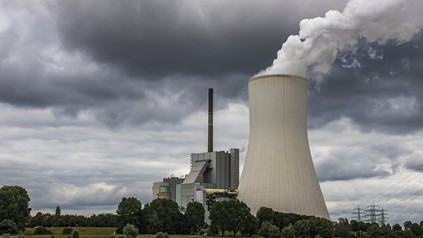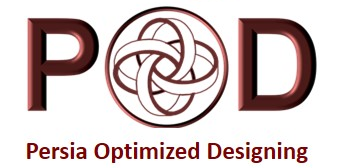Water Supplying Master Plans and Water Resourcing
- Home
- Water Supplying Master Plans and Water Resourcing
A reliable supply of clean water is necessary for the social, economic, and environmental well-being of any area. The Water Supply Master Plan explains the strategy for providing a reliable and sustainable water supply cost-effectively. The Master Plan discusses the adopted water supply 'level of service' goal, water supply strategy to meet that goal, portfolio of water supply projects, and lays out the framework for the annual monitoring and assessment plan.
POD utilizes the following method for water supplying master plan studies:
✓ Assessment of water demands and projection
✓ Assessment of water resources and projection
✓ Assessment of water resource allocation

POD methodology for water demands and projection



✓ Future plan for agricultural water consumption reduction plans regarding new irrigation systems
✓ Assessment of municipalities’ water consumption and needed quality (irrigation, washouts, artificial lakes)
✓ Assessment of existing agricultural water supply systems and future plans
✓ Assessment of cultivation patterns and capability of effluents usage regarding human health
✓ Assessment of existing and future plans for using recycled water and effluents

Ground Water Revival

Lakes and Wetlands Revival

Water Quality Modification

Environmental Revival
Special Considerations
Social Studies
Environmental Assessment
Passive Defense
POD methodology for water resources and projection


Seawater resource assessment
✓ Assessment of seawater quality and pollution and required treatments
✓ Assessment of treatment’s wastes (brines, sludges, backwashes, etc.) disposal impact on the waterbody (hydrodynamic, mixing, and dilution modeling) and EIA
✓ Assessment of the water balance in the waterbody

Effluent resources and water recycling assessment
✓ Identifying sources of effluents (sanitary, Industrial, irrigating drains, and urban and rural runoffs)
✓ Assessment of existing and future plans for developing wastewater treatment plants
✓ Forecasting of effluent amounts for each source
✓ Assessment of tertiary treatment methods
✓ Assessment of future wastewater treatment plants locations in relation to the location of potential usage
Ancillary studies
✓ Terrain and topographical assessment
✓ Metrological assessment
✓ Geological assessment
✓ Geo-hydrological assessment
✓ Geo-chemistry assessment
✓ Data processing
✓ Assessment of relevant previous studies
✓ Rules and regulations consideration
POD methodology for water resources allocation
➣ Geo-matching of water resources and demands with the priority of potable and sanitary water regarding the capacity and quality in existing and future forecasting
➣ Solution for existing and future water shortages (quantities and qualities)
✓ Potable demands
✓ Agricultural demands
✓ Industrial demands
➣ Solutions for water deficiencies
✓ Ground water revival
✓ Lakes and wetlands revival
✓ Water quality modification
✓ Environmental water allocation
➣ Assessment of alternatives for master plans (technical, ✓ CAPEX and OPEX evaluation)
✓ Matching with existing and futured plans
✓ Passive defense consideration
✓ Social impact and fairly distribution of water
✓ Flexibility consideration
✓ Environmental impact consideration
➣ Guidelines for effluent and water recycling in agricultural usage regarding the type of the products and human health
➣ Effluent and water recycling plans for industrial demands in case of water shortage conditions.
➣ Definition of sub-projects regarding the accepted water supply master plan (developing, rehabilitation, and upgrading)
➣ CAPEX and OPEX estimation for sub-projects
➣ Implementation priority matrix for sub-projects
✓ Priority for localized water shortage
✓ Budgeting
✓ Private participation
➣ Upgrading plan for monitoring and measurements
Water supplying and water resources master plan deliverables
➣ Surface water required storage or adequacy confirmation or decreasing the reservation volumes
➣ Urban and rural runoff potential usage (i.e. municipalities’ usage, injection to aquifers, disposal to reivers for environmental allocation, special industries, special usage for cultivation) and needed treatment system
➣ Groundwater usage assessment and the limitation
➣ Optimized water resource allocation for different types of demands
➣ Usage of desalination system and its specifications
➣ Usage of effluents and categorized the end user required quality and consequently needed tertiary treatment.
✓ Irrigation usage
✓ Industrial usage
✓ Artificial lakes
✓ Revival of aquifers, lakes, wetlands, etc.)
➣ Solutions for water shortage for each type of demands ➣ Identifying the limits of developments (urban and rural, industrial complexes, agricultures) ➣Identifying water system utilities like transmission pipelines, water treatment plants, reservoirs, pumping stations, distribution networks
➣ Solutions for water deficiencies (Environmental allocation, lakes, wetlands, aquifers)
✓ Priority for localized water shortage
✓ Budgeting
✓ Private participation
➣ Upgrading plan for monitoring and measurements
